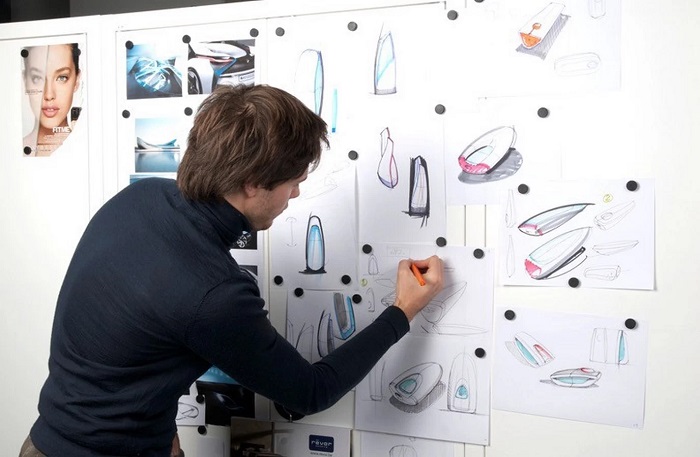A product design agency plays a key role in turning an idea into a reality. Combining artistic vision with commercial acumen enables the creation of products that are not only beautiful, but also deliver business results.
In the rapidly evolving landscape of technology and consumer goods, the partnership with an exceptional digital product agency has transformed from a luxury into an absolute strategic necessity. This comprehensive guide deconstructs the essence of product design excellence, providing business leaders and innovators with the framework to identify a true partner capable of transforming vision into market-defining reality.
Deconstructing the Modern Product Design Agency
So, what is a product design agency in today’s context? It’s far more than a service provider—it’s a strategic partner that orchestrates the entire journey from nebulous concept to tangible, market-ready product. The best product design companies function as interdisciplinary powerhouses, blending anthropology, engineering, data science, and artistic vision to solve complex human problems.
The core disciplines of a full-service product design and development agency typically encompass:
Strategic Foundation
Before a single pixel is placed or line of code is written, elite agencies invest deeply in discovery. This phase involves market analysis, user research, competitive landscaping, and business model alignment. It’s the blueprint that ensures every subsequent decision serves a strategic purpose.
Experience Architecture
This is where what is digital product design truly comes to life. It’s the structural design of information, interaction patterns, and user flows that create intuitive, frictionless experiences. The top product design firms approach this as digital craftsmanship, where every micro-interaction serves a purpose.
Visual Narrative
Beyond mere aesthetics, product graphic design and ui product design communicate brand values, establish emotional connections, and guide users through complex tasks with clarity and delight. The finest product design consultancies understand that visual design is a functional component, not just decoration.
The Digital Product Revolution: Beyond the Screen
Digital product design has evolved into a discipline that shapes how we interact with everything from financial systems to healthcare infrastructure. The leading digital product design agency recognizes that they’re not building interfaces but designing relationships between people and technology.
What separates exceptional digital product design companies from the rest is their approach to complexity. They embrace the challenge of simplifying sophisticated systems into elegant, human-centered experiences. This requires a rare combination of technical depth and artistic sensibility—a balance that defines the best product design agency candidates.
The proliferation of AI has further transformed this landscape. AI for product design isn’t just about automation; it’s about augmentation. Forward-thinking product design consulting firms leverage machine learning to personalize experiences, predict user needs, and create adaptive interfaces that evolve with use.
Specialization Matters: The Rise of Niche Excellence
While many agencies claim broad capabilities, the most impressive outcomes often emerge from specialized practices. The field of medical product design, for example, demands radically different expertise than consumer app development. It requires rigorous adherence to regulatory standards, deep understanding of clinical workflows, and uncompromising commitment to safety and efficacy.
This specialization trend extends across industries. The most sought-after product design firms near me searches often include specific vertical expertise—whether that’s fintech, healthtech, edtech, or enterprise SaaS. This specialized knowledge allows agencies to accelerate development while avoiding costly missteps that generalists might make.
The emergence of ai product design as a distinct discipline illustrates this specialization trend. Designing for AI systems requires understanding not just interface patterns but the capabilities and limitations of underlying models, the psychology of trust in automated systems, and the ethical implications of algorithmic decision-making.
The Anatomy of a World-Class Product Design Team
Behind every breakthrough product lies an exceptional product design team. The composition of this team often determines the success or failure of ambitious initiatives. The leading product design consultancy structures these teams as balanced pods of complementary expertise.
A typical elite team might include:
Experience Strategists
These individuals bridge business objectives and user needs, defining the north star that guides all decisions. They’re often trained in psychology, anthropology, or systems thinking.
Interaction Designers
The architects of digital behavior, they design how products respond to user input, creating intuitive, predictable patterns that reduce cognitive load.
Visual Designers
Artists with purpose, they craft the visual language that makes products not just usable but desirable. Their work on product graphic design establishes emotional resonance and brand recognition.
Prototyping Specialists
These technical designers build functional prototypes that test feasibility and user response before significant engineering investment.
The magic happens in the collaboration between these specialists. The best product design companies create cultures where this collaboration flourishes through structured critique, cross-disciplinary workshops, and shared ownership of outcomes.
The Complete Product Lifecycle: From Ideation to Iteration
True product design and development services extend far beyond the initial launch. The most valuable partnerships encompass the entire product lifecycle, from initial concept through post-launch optimization. This begins with a robust discovery phase where design strategy firms excel at aligning stakeholder vision with market realities.
For many technology startups, finding an experienced MVP development agency represents the critical first step in this journey. The right partner helps distill ambitious visions into focused, testable products that validate market demand with minimal investment. This lean approach to product design and innovation separates pragmatic innovators from those who build in isolation from market feedback.
Following validation, the focus shifts to scaling and refinement. Elite product design and development firms establish measurement frameworks from day one, ensuring that every design decision can be evaluated against real-world usage data. This creates a virtuous cycle where qualitative insights and quantitative data inform continuous improvement.
Beyond Digital: The Physical-Digital Convergence
While much attention focuses on digital experiences, the most interesting innovations often occur at the intersection of physical and digital. The leading product design studio now operates in this hybrid space, designing connected ecosystems rather than isolated products.
This convergence is particularly evident in medical technology, where medical product design increasingly involves sophisticated digital interfaces controlling physical devices. The best product design companies near me searches often reveal agencies with this hybrid capability, though true expertise in this domain remains relatively rare.
The same principles apply to consumer IoT products, smart home systems, and automotive interfaces. In these domains, service and product design become inextricably linked—the physical product exists as just one touchpoint in a broader service ecosystem.
The Selection Framework: Choosing Your Innovation Partner
With countless agencies claiming excellence, how do discerning leaders identify truly exceptional partners? The selection process should evaluate several dimensions beyond portfolio aesthetics.
Strategic Depth
Can the agency articulate not just what they built, but why they built it that way? Do they understand the business context behind their work? The best product design consultancy partners speak the language of business outcomes, not just design awards.
Technical Credibility
Do they understand the implications of their design decisions on implementation complexity? Great product design development happens in dialogue with technical constraints, not in defiance of them.
Process Transparency
Do they have a clearly articulated process that can adapt to unexpected challenges? Rigid methodologies often break when confronted with real-world complexity, while completely unstructured approaches lack accountability.
Cultural Alignment
Will this team integrate effectively with your organization? The strongest product design and management partnerships function as seamless extensions of internal teams, not isolated vendors.
This evaluation might extend to complementary services like finding a skilled website redesign company when digital presence needs transformation. The same principles of strategic alignment and technical excellence apply across digital touchpoints.
The Path Forward: Product Design as Competitive Advantage
In an increasingly crowded and automated world, superior product design remains one of the few sustainable competitive advantages. It’s the difference between products that merely function and those that transform how we live and work. The journey to finding the right product design services company requires diligence, but the rewards compound for years.
The landscape will continue evolving—AI for product design will become more sophisticated, new interaction paradigms will emerge, and the boundaries between industries will further blur. Through these changes, the fundamental value of human-centered design thinking will only increase in importance.
The organizations that recognize product design and innovation not as an expense but as an investment in their future will separate themselves from competitors. They’ll partner with design consultancies that blend artistic vision with commercial pragmatism. They’ll build products that don’t just meet needs but anticipate them. And in doing so, they’ll write the next chapter of technological progress.
MT
About the Author
Marcus Thorne is a product strategist with over 15 years of experience advising Fortune 500 companies and startups on digital transformation. He has led product initiatives across healthcare, finance, and consumer technology sectors, and frequently writes on the intersection of design, technology, and business strategy.













Оставить коммент.